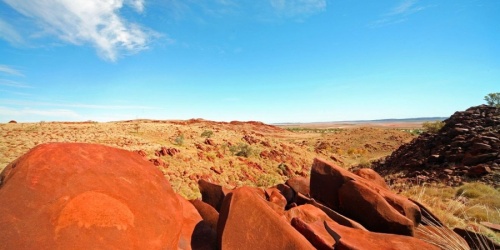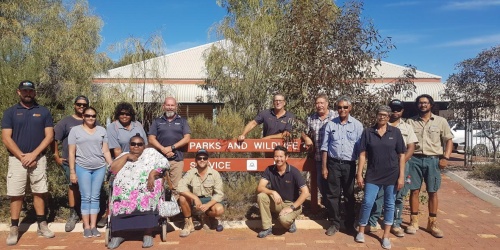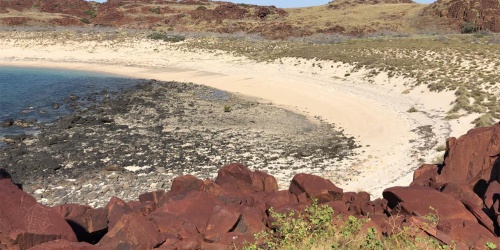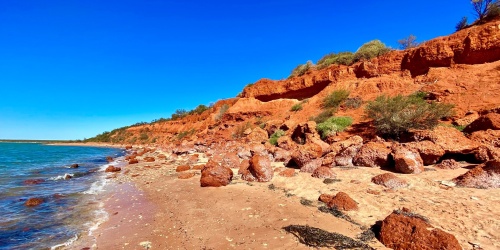Watch the video
Take a six-minute journey across Western Australia with Traditional Owners and Parks and Wildlife Service staff as they explain how joint management is changing lives, strengthening relationships and caring for Country.
Choose your chapter from the video tiles below
Chapter 1: What is joint management? (2 minutes)
Chapter 2: Our shared journey (90 seconds)
Chapter 3: On the ground (90 seconds)
Chapter 4: The benefits (90 seconds)
What areas are jointly managed in Western Australia?
Joint management partnerships are in place from the north Kimberley coast, to the Midwest near Geraldton, and inland to the Gibson Desert.
Through the State Government’s Plan for Our Parks initiative and other agreements, DBCA will continue to work with Traditional Owners to create and jointly manage additions to the conservation estate.
For a closer look at jointly managed parks and reserves, open interactive maps of:
Recently announced parks and reserves will not appear on the maps until gazettal processes are complete.
Benefits of joint management
The benefits of joint management include:
- advancing reconciliation by recognising Aboriginal interests and responsibilities for Country
- improved protection of cultural and heritage values and the maintenance of customary activities
- improved park and reserve management by merging traditional knowledge and contemporary land management practices.
- an enriched visitor experience through interaction with Aboriginal people and a better understanding of Aboriginal culture
- training, capacity building and employment for Traditional Owners
- getting the broader Aboriginal community out on Country, with DBCA facilitating trips for customary activities and sharing knowledge.
How does it work?
Joint management can be achieved through informal and formal management partnerships.
Informal joint management strengthens working relations and builds the capacity of DBCA and Aboriginal partners. This may be achieved through an Aboriginal group providing advice on management issues or participating in projects and activities on Country.
In formal joint management partnerships, a joint management agreement sets out how Traditional Owners and the department will make decisions. It also provides recommendations about how the conservation estate is managed.
The joint management agreement establishes a joint management body of Traditional Owner members and senior staff from DBCA, with a Traditional Owner as chairperson.
The joint management body meets regularly to make decisions, set goals and provide direction and advice. DBCA staff and Aboriginal rangers are responsible for the day-to-day work in the parks.
Joint management body decision-making
Joint management agreements encourage and empower joint management bodies to make decisions. They also outline the steps to resolve any disputes that may arise from these decisions. Decisions of the joint management body must be in line with the Conservation and Land Management Act 1984 (CALM Act) and relevant management plan, with the aim to reach a consensus decision. If the joint management body cannot agree on the outcome of the same agenda item after three meetings, it can become a joint management body dispute. While that dispute is being resolved, the joint management body continues to perform all other obligations without impacting the final decision.
Resolving joint management body disputes
- Disputes are first referred to the CEO of DBCA and the prescribed body corporate chairperson for resolution (by notice of dispute).
- If the CEO of DBCA and the chairperson of the prescribed body corporate cannot work it out, it can be referred to mediation.
- If still unresolved, the final decision is made by the Minister for the Environment under the CALM Act.
Note: To date, there has not been an escalated dispute with a joint management body.
Reviewing and strengthening joint management
A review process was completed in 2019 by DBCA on how WA’s joint management arrangements are working. This focused on formal joint management partnerships in the Kimberley and the Pilbara.
DBCA will implement the recommendations from the review to strengthen existing management partnerships and assist the joint management program to expand to other parts of the State. Recommendations continue to be added.
“For Aboriginal people, success relies on developing relationships... With joint management, you’ve got to feel like both parties are making an effort. And I’d like to think that we’re making the effort. There’s been some challenges along the way but overall, I think this partnership has been really special and it’s been a really good achievement of both MAC [Murujuga Aboriginal Corporation] and Parks and Wildlife [Service]. The respect is both ways and we’re all pretty happy with where we’ve come from, where we are now and where we’re going to.”
(Murujuga Aboriginal Corporation representative)



